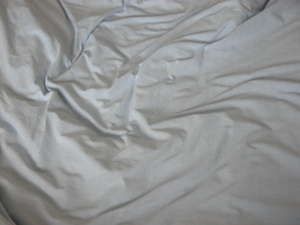Physical Properties
Density- 1.251 g/cm3
Melting Point- 210.1 °C
Boiling Point- 195.79 °C
Color- Colorless
State at 20 °C- Gas
Metal or Nonmetal- Nonmetal
Chemical Properties
At room temperature, nitrogen is a very inactive gas. It does not combine with oxygen, hydrogen, or most other elements. Nitrogen will however combine with other elements only in the presence of extreme heat or energy. This is because nitrogen is considered relatively stable, because it has only five valance electrons, which makes it moderately close to a stable octet.
Sub-atomic Particles
The numbers of protons, electrons, and neutrons present in a neutral atom of this element are as stated bellow:
Protons- 7
Electrons- 7
Neutrons- 7
History
A Scottish physician, named Daniel Rutherford, discovered nitrogen in the year 1772 in Scotland. He enlightened the scientific community and the world that air contains at least two gases, one of which supports combustion and cellular respiration (oxygen), and another gas that does not (nitrogen). This other gas was nitrogen, and Daniel Rutherford discovered this with the following experiment. He placed a mouse in an airtight jar, and waited for it to suffocate and die so that all oxygen in the air would be depleted. Then he added a second mouse to the jar. This mouse died very quickly because of suffocation. This proved that this other gas, which was nitrogen does not support life (cellular respiration). Then he exposed the gas to an open flame. The nitrogen did not ignite. With this evidence Daniel Rutherford concluded that that there was a second gas in the air, besides oxygen. This was because when oxygen is depleted from air, the air shows completely different chemical properties, which means there is another gas present (nitrogen).
Sources
The earth’s atmosphere consists of 78% nitrogen and is the ultimate source of nitrogen in our world.
Legumes fix atmospheric nitrogen through their symbiotic association with Rhizobium bacteria. This creates massive amounts of nitrogen in soil, approximately 100 pounds per acre a year in healthy soil regions.
In warm, well-drained soil, ammonium transforms rapidly to nitrate (NO3-). This is a form of nitrogen, however it is not pure, it is in a compound with oxygen.
Uses
Nitrogen gas is used in incandescent light bulbs to prevent the tungsten filament inside the glass bulb from burning up. This is because nitrogen is an inert material and does not support combustion.
An important use of nitrogen is in the making of ammonia (NH3). This compound is used in the making of fertilizers for plants who require nitrogen-enriched soils to thrive in.
Nitrogen is a liquid at temperatures below −196.5 °C . In this liquid state it can be used as a refrigerant for such things as preservation of blood and cooling of large computer systems, and as well in some specialized industrial uses.
An important use of nitrogen is in the making of ammonia (NH3). This compound is used in the making of fertilizers for plants who require nitrogen-enriched soils to thrive in.
Nitrogen is a liquid at temperatures below −196.5 °C . In this liquid state it can be used as a refrigerant for such things as preservation of blood and cooling of large computer systems, and as well in some specialized industrial uses.
Sources
February 1st 2010, http://en.wikipedia.org/wiki/Nitrogen
February 1st 2010, http://periodic.lanl.gov/elements/7.html
February 1st 2010, http://www.webelements.com/nitrogen/

